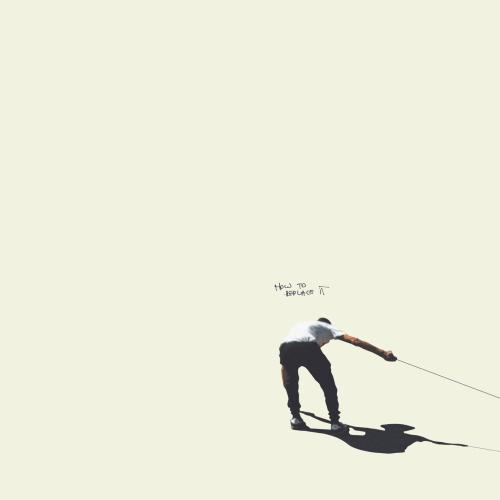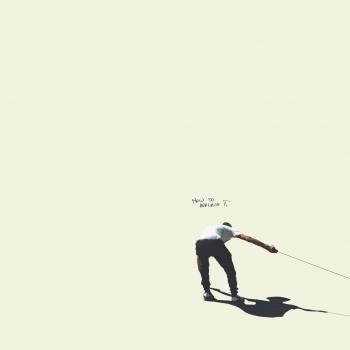
How To Replace It dEUS
Album info
Album-Release:
2023
HRA-Release:
17.02.2023
Album including Album cover
- 1 How To Replace It 05:30
- 2 Must Have Been New 03:46
- 3 Man Of The House 05:12
- 4 1989 05:05
- 5 Faux Bamboo 04:27
- 6 Dream Is A Giver 04:34
- 7 Pirates 04:42
- 8 Simple Pleasures 03:32
- 9 Never Get You High 03:36
- 10 Why Think It Over (Cadillac) 05:07
- 11 Love Breaks Down 03:42
- 12 Le Blues Polaire 06:36
Info for How To Replace It
dEUS have never really had a philosophy. Never wanted one. Yet they’ve remained true to certain guiding principles. “You don’t want to repeat yourself, but you have your style,” says Tom Barman, frontman and genial leader of the cult Belgian art-rockers. “You want to try new stuff and just react to whatever feels fresh at the time.” So it is with How To Replace It, their eighth studio album and first in ten years; distinctive and inventive, melodic yet defiantly off-kilter. Unique. And above all, unmistakably dEUS.
Even that title – mysterious, oblique – scans as being fantastically unknowable, hinting at a deep sense of wisdom. Follow the lyrical clues, and you might conclude “it” concerns romance and ageing; squint a little, and you might alight on modernity being the malaise described. Either way, fueling intrigue is by design. It’s a question, it’s an answer…it’s up to the listener to decide.
It’s also dEUS at their enigmatic best. Ten years seems like a very long time, but they’ve never really been away. There was the Selected Songs 1994-2014 compilation to put together, the Soft Electric tour, numerous festival appearances, and anniversaries to celebrate – their magnum opus, The Ideal Crash, turned 20; a 65-date European tour for it took up over a year in
preparation and execution.
“Things always take longer than you think,” the singer says laconically, “but this was not a ten- year project.” It wasn’t even four years either, and although concrete plans were laid down in 2018 – calendars cleared, sessions booked – there was rehearsing and touring The Ideal Crash, and, of course, the pandemic. But the band’s way of working changed too. For the previous two records, jam sessions were long and structured – five days a week, noon till 6pm – with songs being moulded and developed over time. How to Replace It however, came together during concentrated, short and explosive jams. With a lot of classic and time consuming dEUS finetuning and sculpting afterwards. Old habits die hard…
Twenty-eight years after their debut record, dEUS remain indie stalwarts, pushing ever forward, endlessly curious and creatively restless.
“After so many years, we want to do so many festivals, and play in so many places,” Barman says. “We can’t fucking wait to do these songs live.”
dEUS
dEUS
The Belgian indie scene, experts agree, is considered the most creative as well as progressive in all of Europe - and dEUS are its commercial and artistic spearhead. In this scene there are numerous musicians who combine the most diverse genres in several formations in parallel and are often active in other art forms as well. This was also the case when dEUS was founded in 1991: the core of this extremely open-minded band was formed by the documentary filmmaker Tom Barman, the painter and sculptor Rudy Trouvé, and the fashion designer Stef Kamil Carlens. The three, supplemented by two other musicians, including violinist Klaas Janzoons, who is still a member of the band today, were socialized so differently artistically that a joint result almost automatically had to break all known boundaries.
Thus, the debut album "Worst Case Scenario", released in 1994, already showed a breathtaking stylistic heterogeneity between jazz, folk, noise, alternative and experimental rock, which could not hide its clear reference to artists like Frank Zappa, Captain Beefheart or Tom Waits. The band then went almost wilder on their second album, "In a Bar, Under the Sea" (1996), a masterpiece of versatility that ultimately could only be blamed for one thing: it was hard to imagine that all this different music should come from a single band. Despite this challenging experimentation and thanks to overwhelming reviews from the experts, however, dEUS achieved an international breakthrough with these two albums.
This was followed by the first of several caesuras in the band's now 31-year history. Trouvé and Carlens left the band and founded their own highly acclaimed bands Kiss My Jazz and Zita Swoon. In their place as creative counterparts to bandleader Tom Barman came the Scotsman Craig Ward, and with him came a new approach: How would it be to present all these genres not just side by side, but closely interwoven with each other to generate a work of art that, for all its versatility, sounded rounded, coherent and homogeneous? The first result of this second dEUS era was called "The Ideal Crash" (1999) and is considered one of the best albums in the history of indie rock. Every single song turned out to be a compositional jewel, carefully but purposefully equipped with the necessary details. No wonder that dEUS took a break of several years after this over-work. After that, all members pursued other music or art projects.
It wasn't until 2004 that dEUS reunited, once again in a heavily modified version; of the founding members, only Barman and Janzoons have been around since then, while Barman recruited the other musicians from the multitude of outstanding bands from Antwerp and Ghent, including Soulwax drummer Stéphane Misseghers and musical jack-of-all-trades Mauro Pawlowski, who had explored the boundaries of what was absolutely feasible and audible in indie rock with more than half a dozen formations. Since then, four more dEUS albums have been released, all of which have been acclaimed by press and fans alike, giving dEUS a special place in European indie rock history as a rarely consistent and consistent band that simply cannot make an average album. Expectations are correspondingly high for their upcoming eighth record - the first since their last long-player to date, 2012's "Following Sea".
This album contains no booklet.









